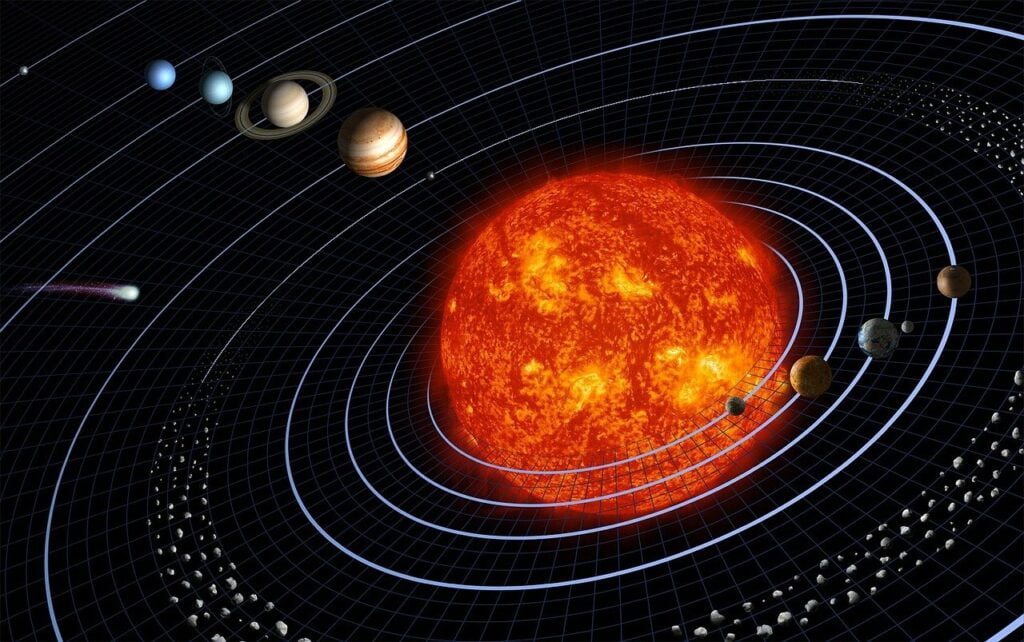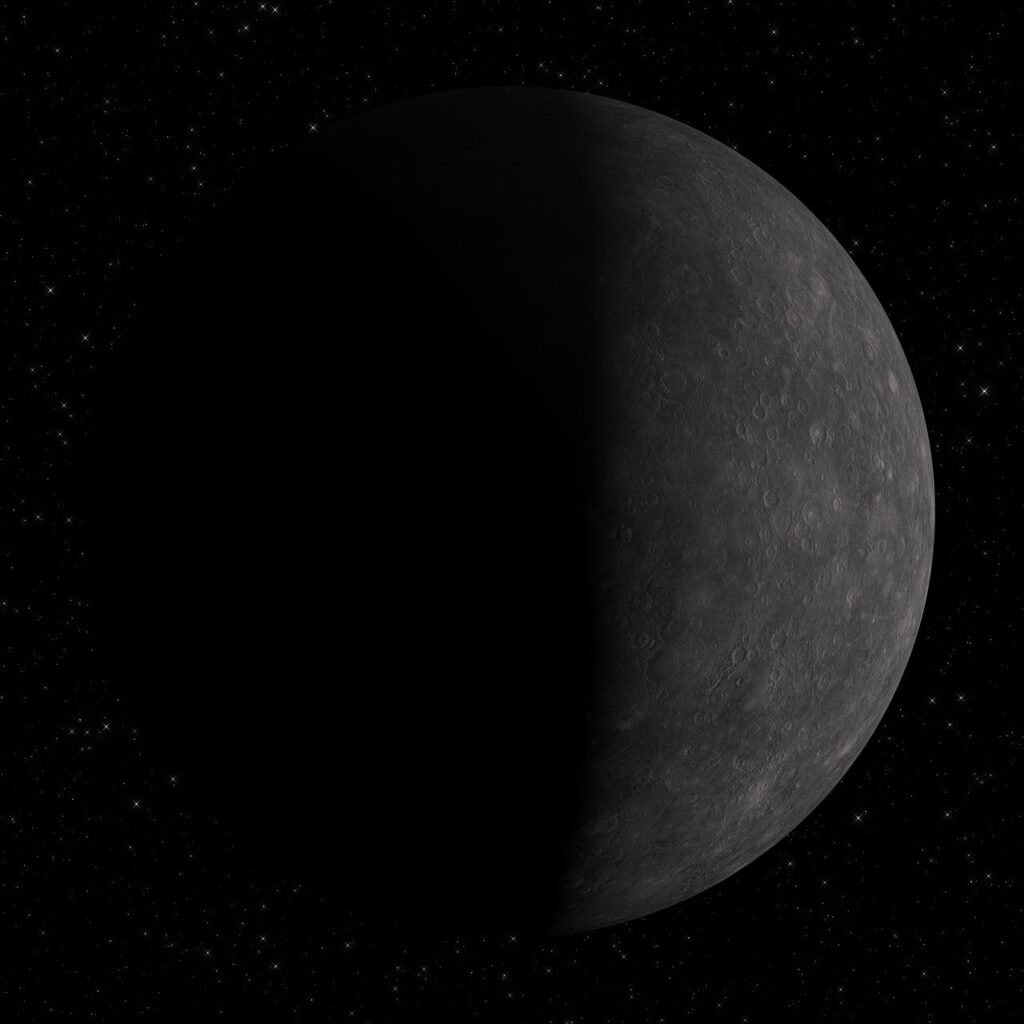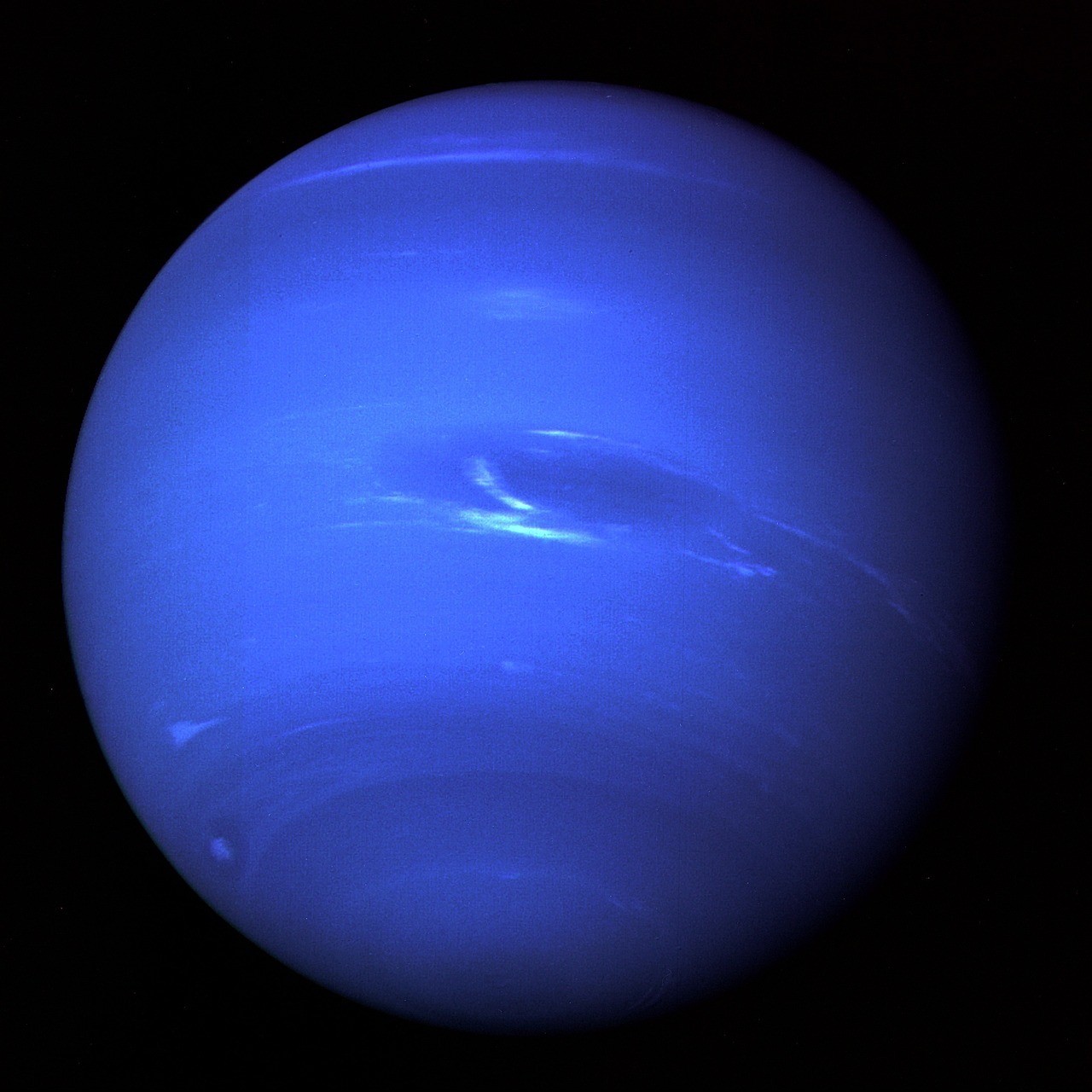
Nestled in the far reaches of our solar system, beyond the familiar realm of Jupiter, Saturn, and Uranus, lies Neptune, the eighth and outermost planet. Nicknamed the “Ice Giant,” Neptune is a world of extremes, characterized by its vast size, frigid temperatures, and powerful winds.
A Realm of Vastness and Extremes
Neptune, with a radius of about 3.88 times that of Earth, is the fourth-largest planet in our solar system. Its immense size and distance from the Sun make it a challenging object to observe, but recent missions like Voyager 2 have provided us with invaluable insights into this enigmatic world.
Neptune’s composition is primarily hydrogen and helium, similar to its Jovian cousins. However, it also contains a significant amount of volatile substances like methane, ammonia, and water, which give it a distinctly icy character. This icy composition contributes to Neptune’s extremely cold temperatures, with an average surface temperature of -222 degrees Celsius (-371 degrees Fahrenheit).
A Tempestuous Atmosphere
Neptune’s atmosphere is a dynamic and turbulent environment, dominated by strong winds that reach speeds of up to 1,500 kilometers per hour (932 miles per hour). These winds, even faster than the speed of sound, are driven by the planet’s internal heat and the rotation of its massive core.
One of the most striking features of Neptune’s atmosphere is the Great Dark Spot, a persistent, swirling storm larger than Earth. This storm, first observed in 1989 by Voyager 2, is thought to be a result of the planet’s strong winds colliding and creating localized areas of low pressure.
The Great Dark Spot is not the only storm to grace Neptune’s atmosphere. The planet is constantly active, with smaller storms, bright clouds, and dark streaks constantly forming and dissipating. These storms are a testament to the planet’s immense energy and the intense forces at play in its atmosphere.

Internal Structure and Dynamics
Neptune’s interior is a dynamic and complex realm, divided into distinct layers. At the heart lies a hot, dense core, thought to be composed primarily of rock and ices, with a temperature estimated to be around 6,400 Kelvin (6,127 degrees Celsius). Surrounding this core is a thick layer of liquid hydrogen and helium, gradually transitioning into a gaseous envelope as it approaches the planet’s visible atmosphere.
The planet’s internal heat is believed to be a relic of its formation and ongoing gravitational contraction. This residual heat, though diminishing over time, powers Neptune’s atmospheric dynamics and drives the formation of its powerful magnetic field.
Neptune’s magnetic field is the fourth strongest in the solar system, extending far beyond the planet’s atmosphere. It is generated by the planet’s rotating, electrically conducting fluid interior, similar to the Earth’s magnetic field. However, unlike Earth’s magnetic field, which is nearly aligned with its rotation axis, Neptune’s magnetic field is tilted by about 47 degrees and offset from its center. This unusual configuration likely results from the planet’s rapid rotation and the complex interactions within its interior.
Rings and Moons
Neptune’s ring system is faint and narrow, composed primarily of dark, dusty particles. It is thought to be relatively young, possibly formed by the disruption of small moons or comets. The rings are divided into several distinct ringlets, each with unique properties.
Neptune boasts a retinue of 14 moons, each with its own unique characteristics and origins. The largest and most prominent moon is Triton, a massive icy world with a retrograde orbit, meaning it orbits Neptune in the opposite direction of the planet’s rotation. This suggests that Triton was likely captured from elsewhere in the solar system.
Nereid, the outermost moon, is a peculiar celestial body with an elongated orbit that takes it far from Neptune and then brings it close again. This unusual orbit suggests that Nereid may have been captured from a Kuiper Belt object, a region of icy bodies beyond Neptune’s orbit.
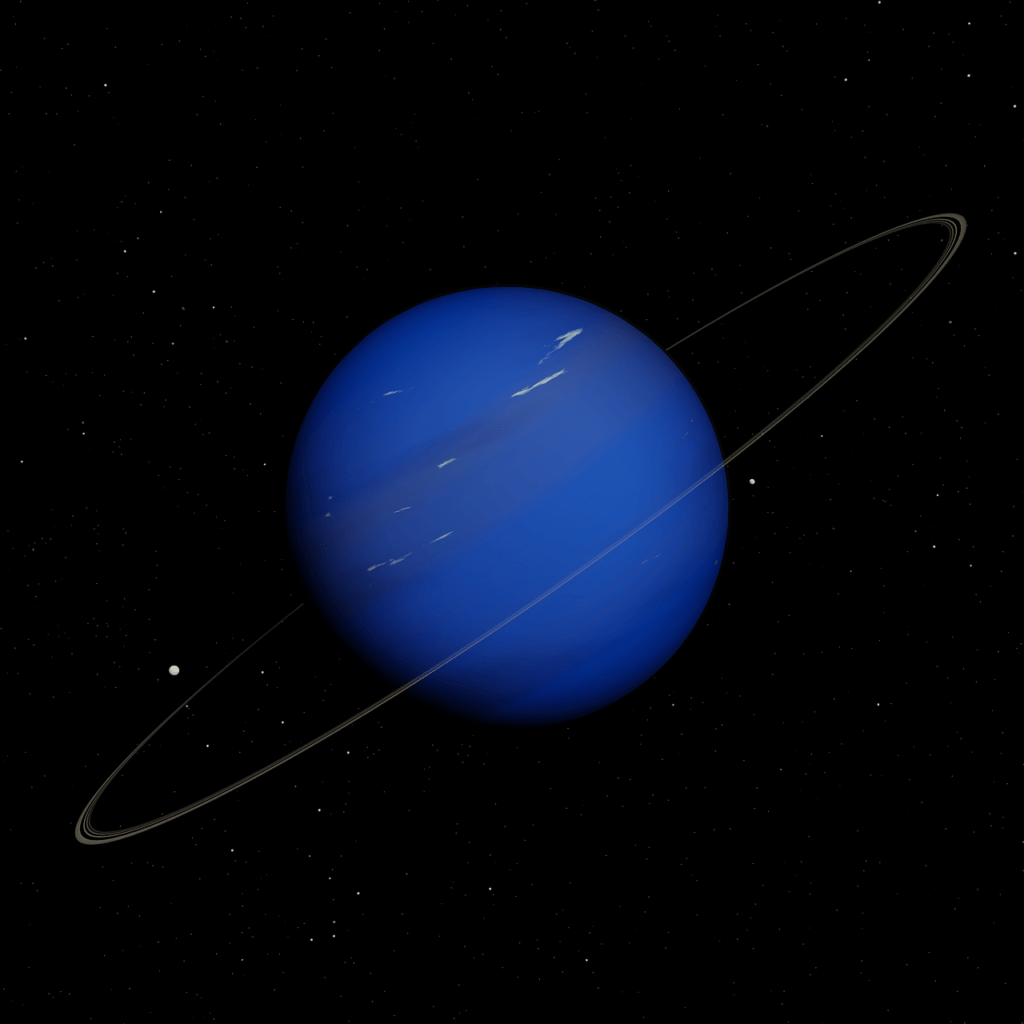
Discovery and Exploration
Neptune’s discovery in 1846 was a remarkable feat of celestial mechanics. Urbain Le Verrier, a French astronomer, predicted the planet’s existence based on anomalies in the orbit of Uranus. His calculations led Johann Gottfried Galle, a German astronomer, to locate Neptune using a telescope.
The first close-up observations of Neptune came in 1989 with the Voyager 2 mission. Voyager 2 flew within 4,800 kilometers (2,980 miles) of the planet, capturing stunning images and providing valuable data about its atmosphere, rings, and moons.
Today, our understanding of Neptune continues to evolve thanks to observations from ground-based telescopes and space telescopes like Hubble. These observations have revealed new details about the planet’s atmosphere, including its complex cloud structures and the presence of active storms.
Future Exploration of Neptune
Neptune, the eighth and outermost planet in our solar system, remains one of the most enigmatic celestial bodies in the cosmos. Its remote location, coupled with its gaseous atmosphere and complex weather patterns, has limited our understanding of its true nature. However, recent advancements in space exploration have paved the way for potential future missions to Neptune, offering the prospect of unveiling the planet’s hidden secrets and enriching our knowledge of planetary formation, evolution, and the outer solar system.
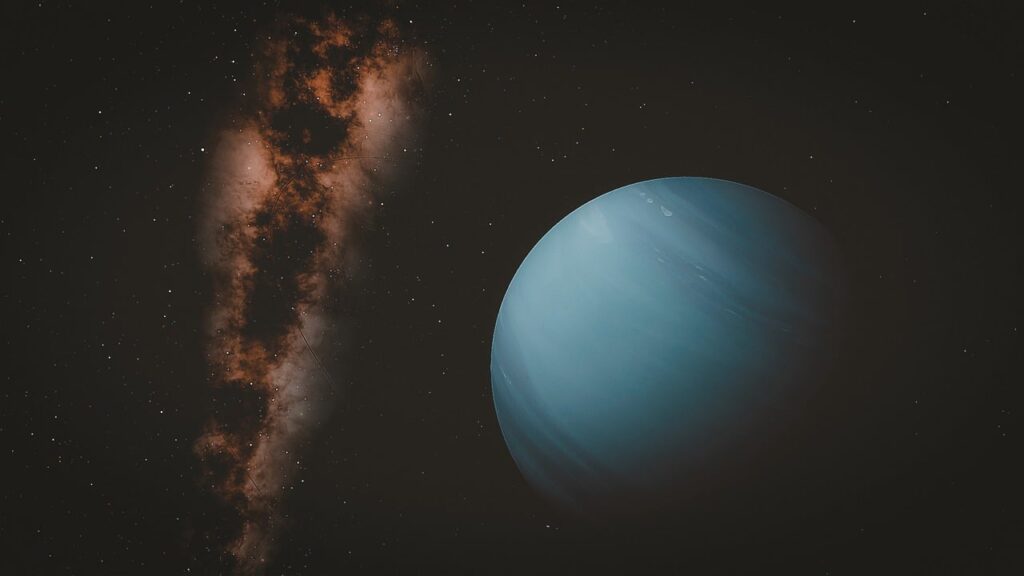
Neptune Orbiter and Probe (NOP) Mission
One of the most promising proposals for future Neptune exploration is the Neptune Orbiter and Probe (NOP) mission. This ambitious endeavor envisions an orbiter circling the planet for several years, gathering detailed data on Neptune’s atmosphere, interior, and moons. A probe would descend into Neptune’s atmosphere, providing unprecedented insights into its composition, dynamics, and potential for habitability.
The NOP mission has the potential to revolutionize our understanding of Neptune. It could reveal the underlying mechanisms driving Neptune’s powerful winds and storm systems, such as the colossal Great Dark Spot, which is comparable in size to Earth. More importantly, it could probe the depths of Neptune’s atmosphere, searching for signs of subsurface oceans, which could harbor potential for life.
Exploring Neptune
Studying Neptune provides valuable insights into the processes that shaped our solar system billions of years ago. Its composition, which is rich in volatiles like methane and ammonia, suggests that it formed in the colder outer reaches of the solar nebula, where these elements were more abundant. Understanding Neptune’s formation and evolution can help us piece together the puzzle of how our solar system came to be.
The possibility of subsurface oceans beneath Neptune’s icy mantle has long intrigued scientists. These oceans, if they exist, could hold the key to understanding the potential for life beyond Earth. The NOP mission could provide the first direct evidence of subsurface oceans on Neptune, opening up a new frontier in astrobiology.
Despite decades of scientific inquiry, Neptune remains shrouded in mystery. Our understanding of this enigmatic planet is still in its early stages, and future missions like the NOP promise to unveil new wonders and deepen our comprehension of the cosmos. Neptune’s remoteness and complexity only serve to heighten the intrigue, making it a beacon for continued exploration and a testament to the boundless potential of scientific discovery.
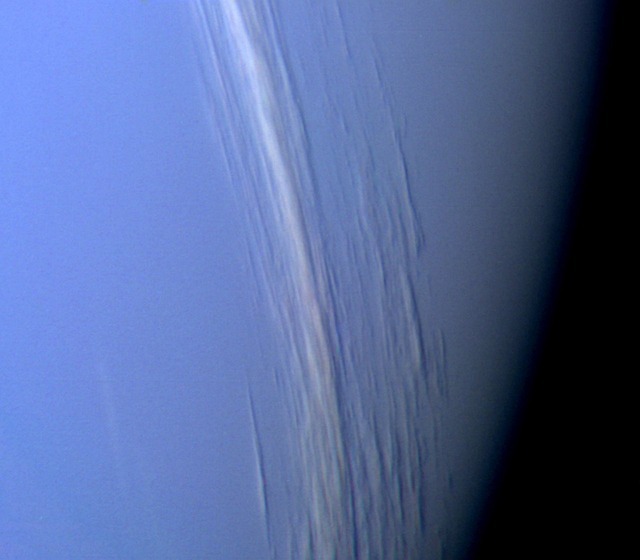
Conclusion
Neptune, with its swirling storms, subsurface oceans, and enigmatic moons, stands as a testament to the diversity and complexity of our solar system. Future missions hold the key to unlocking its secrets and expanding our knowledge of planetary formation, evolution, and the origins of life. As we venture deeper into Neptune’s realm, we embark on a journey of discovery that will not only illuminate the mysteries of this distant world but also enrich our understanding of our place in the vast universe.
You may also like:
Mercury: The Closest Planet to the Sun
Venus: The Earth’s Twin or a Very Different Planet?
Mars: Comprehensive Exploration, unveiling the Mysteries
Jupiter: A Cosmic Giant – Symphony of Storms
Saturn: A Gaseous Giant with Enthralling Rings and Diverse Moons
Useful links
NASA’s Neptune Fact Sheet: https://science.nasa.gov/neptune/
ESA’s Neptune Information Sheet: https://sci.esa.int/web/solar-system/-/35654-neptune
JAXA’s Neptune Overview: https://global.jaxa.jp/

